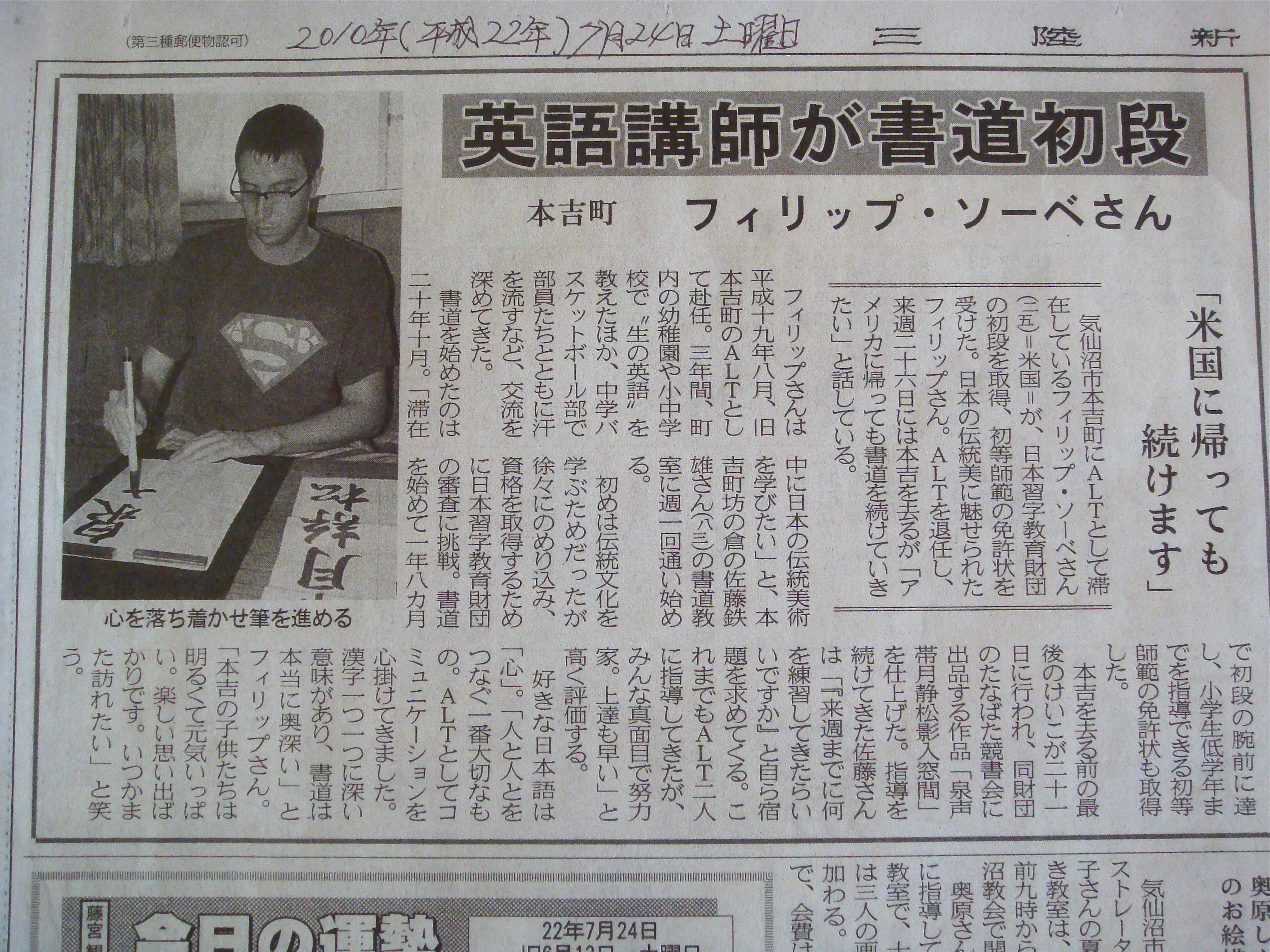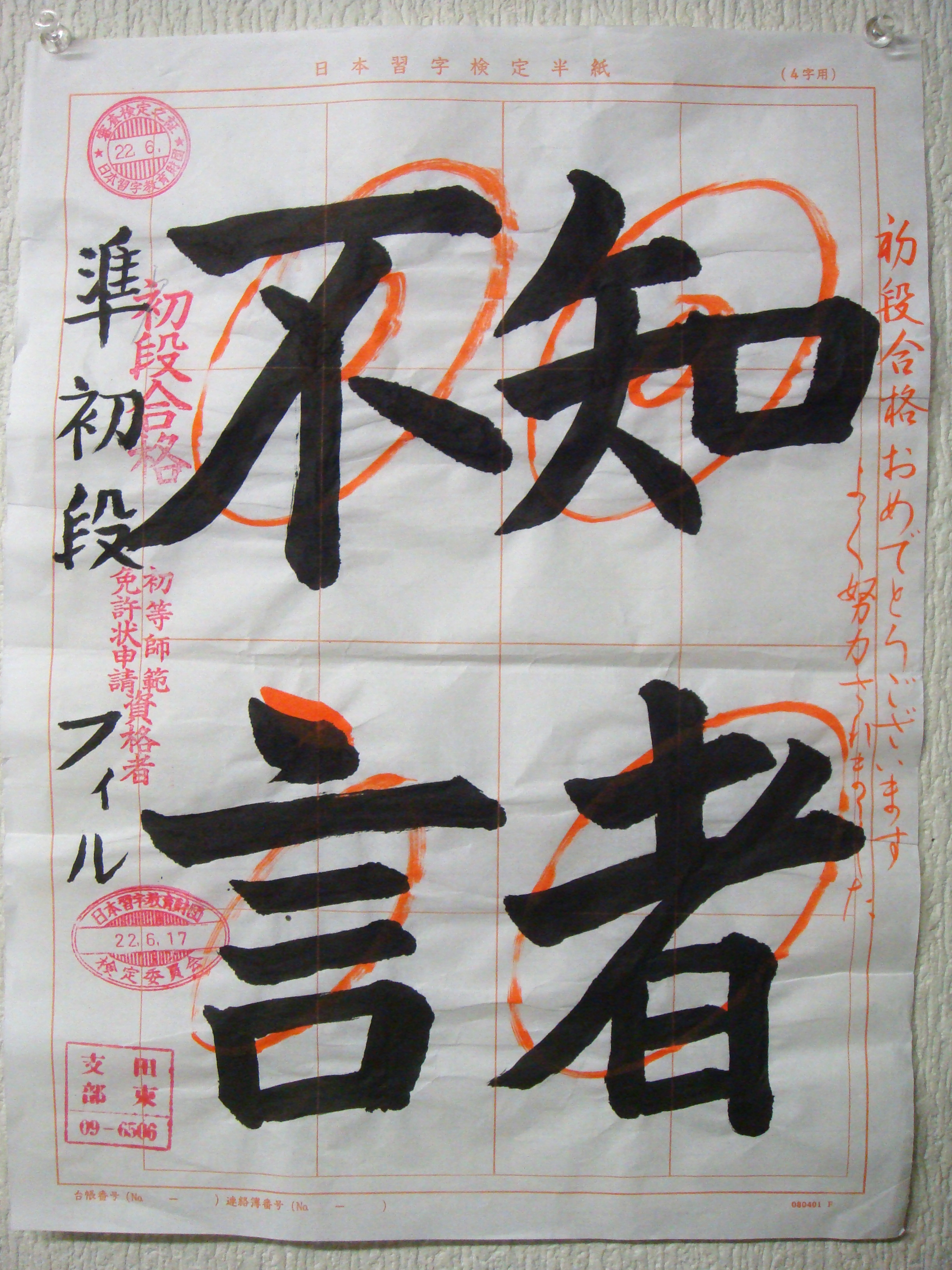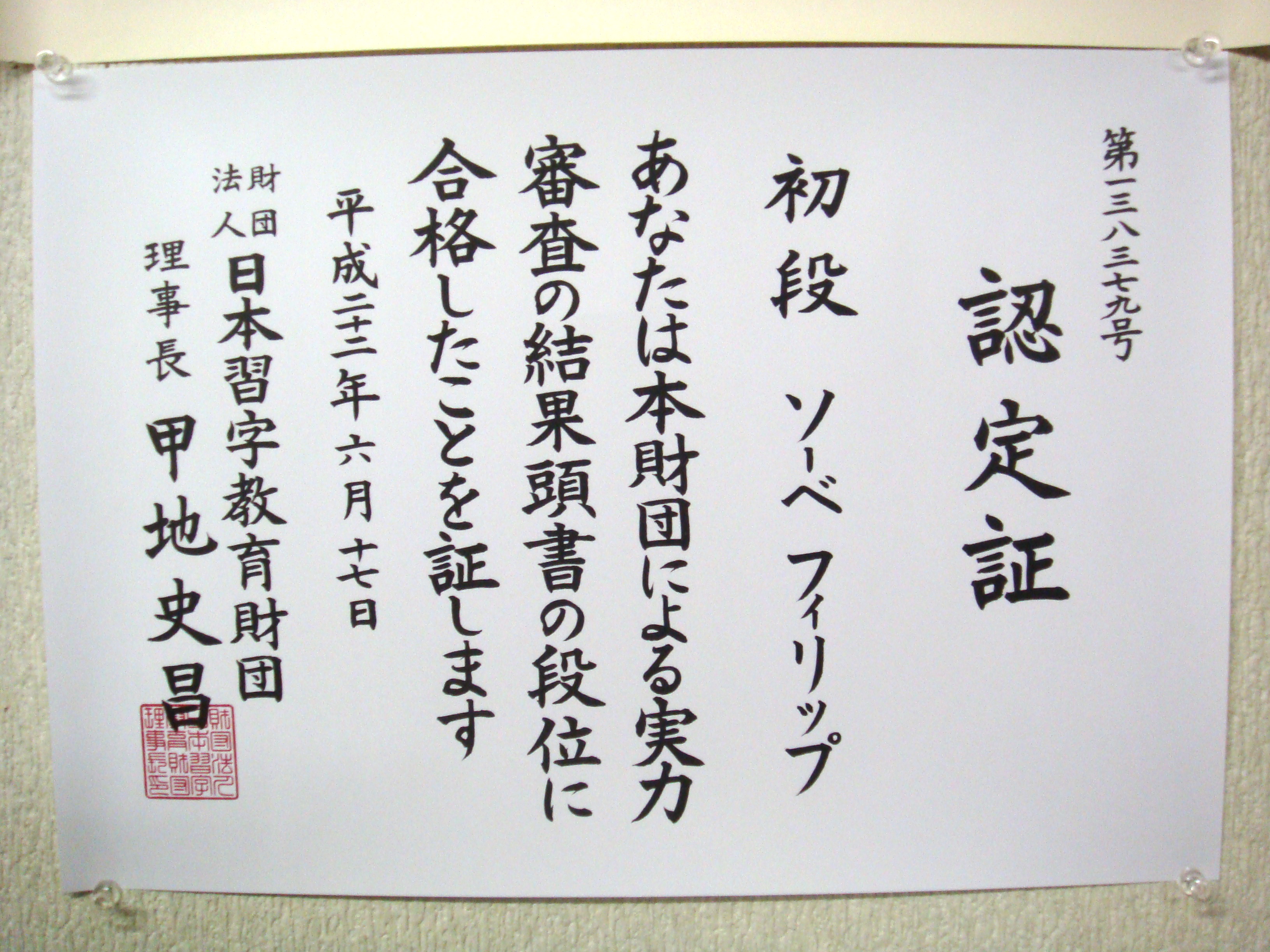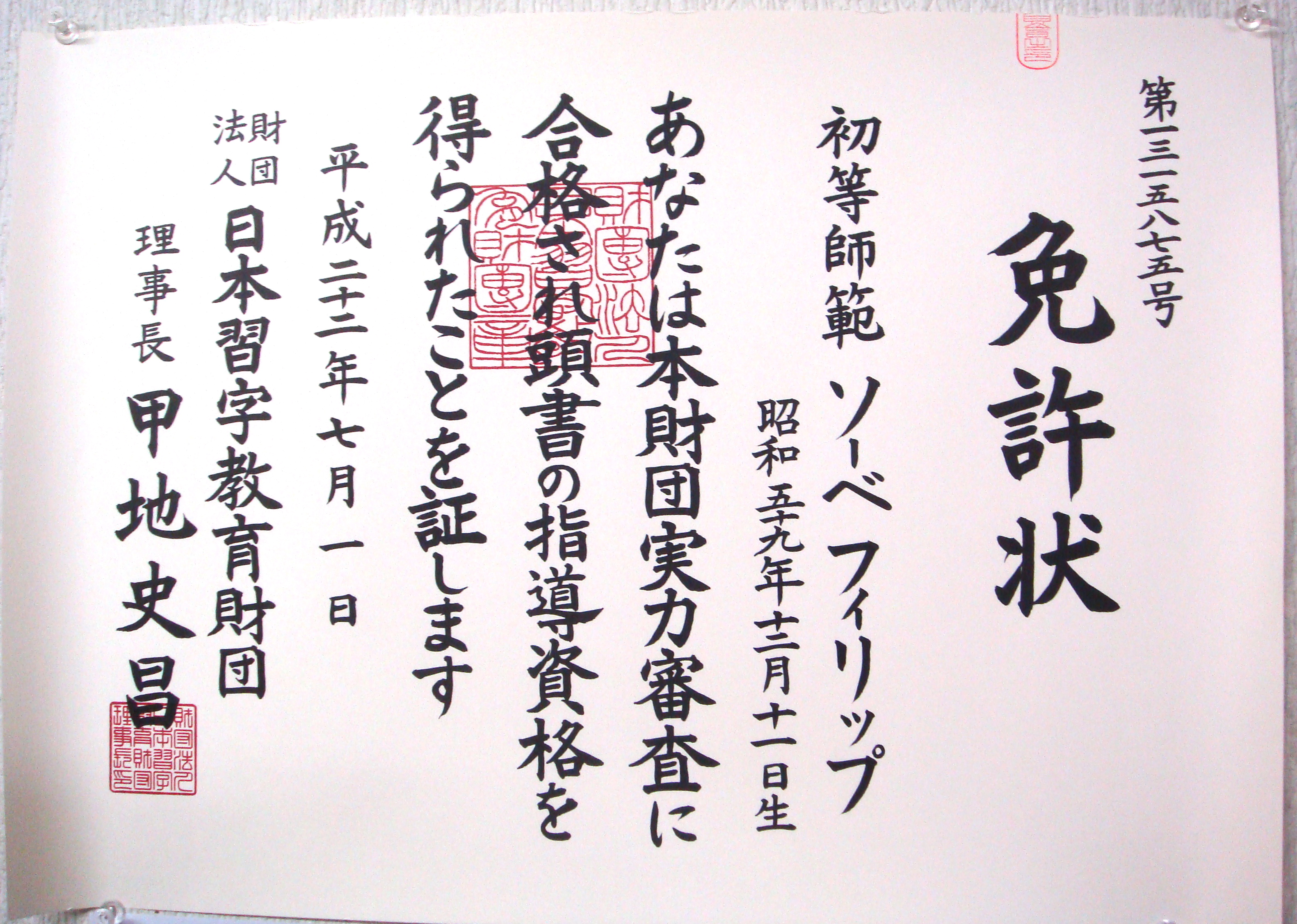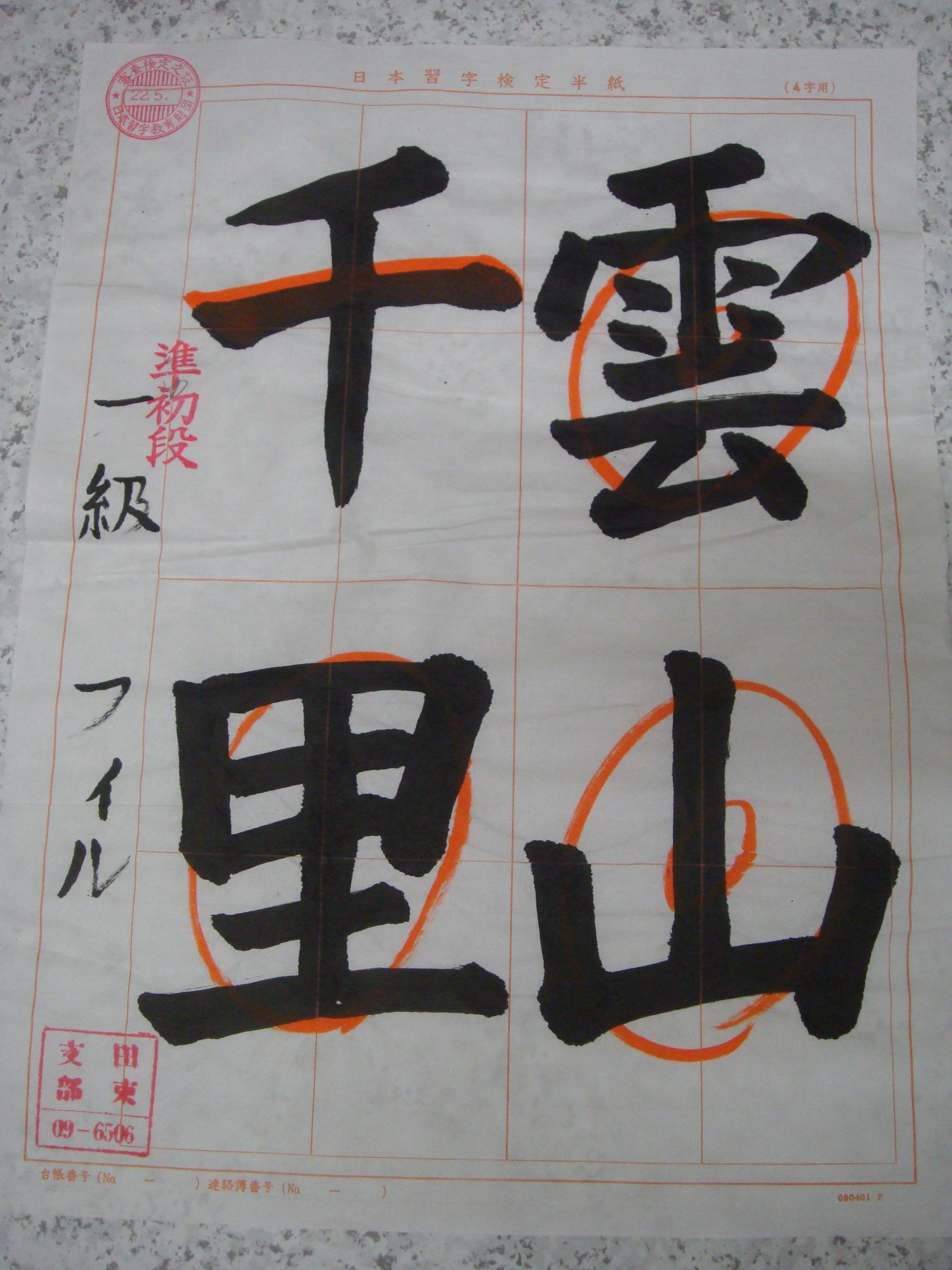The following is an article I was featured in from the Sanriku Shimpo, a regional newspaper in the northeastern part of the Miyagi prefecture:
(A translated version can be found below)
English Teacher Reaches Sho-dan in Japanese Calligraphy
July 24, 2010
Phillip Sauvé, an ALT (Assistant Language Teacher) in Motoyoshi, Kesennuma, recently reached sho-dan (first grade master) in Japanese calligraphy through the Japan Calligraphy Education Foundation. He also received a license to teach elementary calligraphy. Phillip is captivated by Japan’s traditional arts. Even though he will retire from the ALT position and leave Motoyoshi next week on July 26th, he says he would like to continue practicing Japanese calligraphy after he returns to America.
Phillip was appointed the ALT of the former town of Motoyoshi in August of 2007. In addition to teaching English at the town’s kindergartens, elementary, and junior high schools for the past three years, he also deepened his cultural exchange by partaking in the basketball club activities at the junior high schools.
He began learning Japanese calligraphy around October of 2008. “While I was living in Japan, I wanted to learn one of Japan’s traditional arts,” said Phillip. He started going to local calligraphy master Tetsuo Sato’s calligraphy classes once a week.
At first his goal was to learn a part of traditional Japanese culture, but he steadily became completely absorbed in calligraphy and decided to challenge himself within the Japan Calligraphy Education Foundation’s level ranking system. After only a year and eight months of practicing Japanese calligraphy he has reached the sho-dan level, as well as Continue reading

